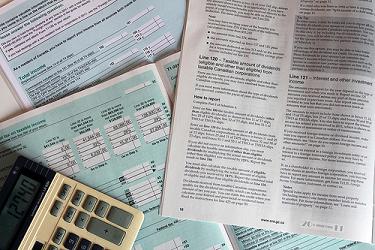Well, well, another misinformed tax freedom day has come and gone on June 12. To mark the occasion this year I wanted to skip over the very serious methodological flaws that others have pointed out, and take a look at several other items that Canadians are “free of” at various points. By gaining “freedom” from the taxes that Canadians pay we also gain “freedom” from the services those taxes pay for. I for one am all about more freedom!!
(Let me point out that the back of my envelope got a good workout during these calculations so don’t take them as gospel).
The first “freedom” day I decided to calculate was freedom from medicare. By what day did the provincial governments of Canada stop meddling in Canadians’ medical bills and leave them free to pay them out of pocket.
Table 1: Freedom from Medicare Day
Year 1980 1990 1995 2000 2005 2011
Medicare Freedom Nov 6 Nov 3 Oct 24 Oct 19 Oct 15 Oct 13
Date
Source: CIHI, National Health Expenditure Trends 1975-2011 Table A.3.3.1 & Table A3.2.1 Ratio of public to all health expenditures (This covers hospitals (Operating and Capital), physicians, homecare and prescription drugs but EXCLUDES other professionals (like dentists/optometrists), public health, non-prescription drugs and health research.)
As you can see, Canadians have gained almost an entire month since 1980 of additional “freedom” for which they get to pay out of pocket for their prescription drugs, homecare services and physician services. So you don’t happen to have extra money to enjoy the “freedom” of paying for your prescriptions all year, time to start making “freedom” tradeoffs between rent and medication.
Canadian seniors, who are often the heaviest users of medicare, are not the only ones who received more “freedom” from lower taxes, students also drank deeply from the chalice of liberty. In the latter case, students gained significant “freedom” from low tuition as governments provided less and less public funding for higher education. The day at which the government stops investing in post-secondary education and students have to pay the full cost advanced rapidly since the late 1980s.
Table 2: Freedom from Low Tuition Day
Year 1989 1995 2000 2005 2009
Freedom from Sept 19 August 25 July 26 July 19 July 21
Low Tuition
Source: Statistics Canada: Cansim 385-00074 ratio of all government revenue to total revenue
Table 2 shows that in 1989, governments stopped investing in post-secondary education and provided students with the “freedom” to pay tuition on September 19. By 2009, governments had truly opened the freedom gates by stopping payment to universities and colleges almost 2 months earlier. Students for their part gained significantly more “freedom” through higher tuition. Don’t have the money to enjoy your additional “freedom”? There is always the “freedom” to carry heavy debt.
This article was first posted on Behind the Numbers.



